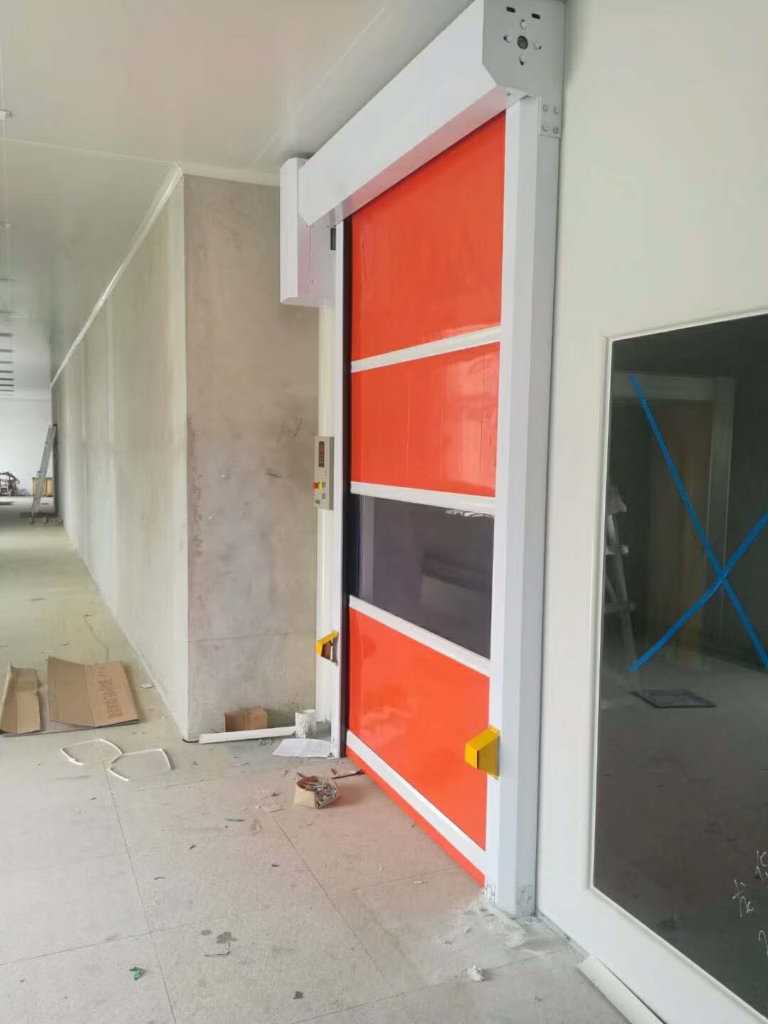rolling door
Rolling Doors: Types, Benefits, and Applications
What Are Rolling Doors?
Rolling doors, also known as overhead coiling doors or roller shutters, are vertically retractable barriers made from horizontal slats or panels that roll up into a compact coil above the opening. These doors are commonly used in commercial, industrial, and residential settings due to their space-saving design, durability, and security features.
Rolling doors operate via a torsion spring or motorized mechanism, allowing smooth and efficient opening and closing. They are available in various materials, including steel, aluminum, and PVC, catering to different functional and aesthetic needs.
Types of Rolling Doors
1. Manual Rolling Doors
Manual rolling doors require physical effort to open and close, typically using a hand chain or pull strap. These are cost-effective and ideal for low-traffic areas where automation is unnecessary.
2. Motorized Rolling Doors
Motorized rolling doors operate via an electric motor, offering convenience and speed. They are commonly used in warehouses, garages, and commercial buildings where frequent access is required. Remote controls, keypads, or smartphone integration enhance usability.
3. Fire-Rated Rolling Doors
Designed to prevent the spread of fire and smoke, fire-rated rolling doors are mandatory in commercial and industrial buildings. They automatically close when triggered by heat or smoke detectors, ensuring compliance with safety regulations.
4. Security Rolling Doors
Constructed from reinforced steel or aluminum, security rolling doors provide robust protection against break-ins and vandalism. They often feature interlocking slats, tamper-resistant locks, and impact-resistant coatings.
5. Insulated Rolling Doors
Insulated rolling doors improve energy efficiency by reducing heat transfer. They are ideal for cold storage facilities, warehouses, and garages where temperature control is essential.
6. High-Speed Rolling Doors
High-speed rolling doors open and close rapidly, minimizing air exchange and improving operational efficiency in industrial settings. They are commonly used in food processing plants, cleanrooms, and logistics centers.
7. Grille Rolling Doors
Grille rolling doors combine security with visibility, featuring mesh or perforated designs. They are often used in retail stores, parking garages, and commercial spaces requiring airflow and natural light.
Key Benefits of Rolling Doors
1. Space Efficiency
Unlike traditional swing or sectional doors, rolling doors roll up vertically, eliminating the need for clearance space. This makes them ideal for tight or constrained areas.
2. Durability and Longevity
Constructed from high-quality steel, aluminum, or reinforced PVC, rolling doors withstand harsh weather, heavy usage, and mechanical stress. Galvanized or powder-coated finishes enhance corrosion resistance.
3. Enhanced Security
Interlocking slats, robust locking mechanisms, and tamper-proof designs deter unauthorized access. Security rolling doors are widely used in banks, retail stores, and industrial facilities.
4. Energy Efficiency
Insulated rolling doors minimize heat loss, reducing energy consumption in climate-controlled environments. They help maintain stable indoor temperatures, lowering HVAC costs.
5. Low Maintenance
Rolling doors require minimal upkeep compared to traditional doors. Periodic lubrication of tracks and inspection of springs ensure smooth operation.
6. Customization Options
Available in various colors, finishes, and materials, rolling doors can be tailored to match architectural aesthetics while meeting functional requirements.
7. Noise Reduction
Insulated rolling doors dampen external noise, making them suitable for residential garages, offices, and sound-sensitive environments.
Applications of Rolling Doors
1. Commercial Establishments
Retail stores, shopping malls, and restaurants use rolling doors for security, visibility, and ease of operation. Grille-style doors allow ventilation while maintaining safety.
2. Industrial Facilities
Warehouses, factories, and logistics centers benefit from high-speed and fire-rated rolling doors, ensuring efficient workflow and compliance with safety standards.
3. Residential Properties
Homeowners install rolling doors for garages, storage units, and patio enclosures due to their space-saving and security advantages.
4. Automotive and Parking Garages
Rolling doors provide secure access control for parking garages, car dealerships, and service centers.
5. Cold Storage and Food Processing
Insulated and high-speed rolling doors maintain temperature integrity in refrigerated warehouses and food production facilities.
6. Healthcare and Cleanrooms
Hygienic, fast-operating rolling doors prevent contamination in hospitals, laboratories, and pharmaceutical facilities.
Factors to Consider When Choosing Rolling Doors
1. Material
- Steel: High strength, ideal for security and industrial use.
- Aluminum: Lightweight, corrosion-resistant, suitable for commercial applications.
- PVC: Affordable, weather-resistant, best for residential use.
2. Operating Mechanism
- Manual for budget-friendly solutions.
- Motorized for convenience and automation.
3. Insulation Needs
- Single-layer doors for basic protection.
- Double-layer insulated doors for thermal efficiency.
4. Security Requirements
- Standard locks for low-risk areas.
- Reinforced slats and anti-pry mechanisms for high-security needs.
5. Fire and Safety Compliance
- Fire-rated doors for commercial buildings.
- Smoke seals and automatic closing mechanisms for enhanced safety.
6. Maintenance and Warranty
- Opt for doors with durable components and manufacturer warranties to reduce long-term costs.
Installation and Maintenance Tips
1. Professional Installation
Hiring experienced installers ensures proper alignment, smooth operation, and compliance with safety standards.
2. Regular Lubrication
Apply silicone-based lubricant to tracks, rollers, and springs to prevent friction and wear.
3. Inspect for Damage
Check for dents, rust, or misaligned slats periodically to maintain functionality.
4. Test Safety Features
For motorized doors, test auto-reverse mechanisms and sensors to prevent accidents.
5. Clean Tracks and Surfaces
Remove debris and dust from tracks to ensure seamless movement.
Industry Standards and Certifications
When selecting rolling doors, verify compliance with:
- UL 10B/10C (Fire-rated doors)
- ANSI/DASMA 105 (Safety standards)
- ENERGY STAR® (Insulated doors)
Cost Considerations
Rolling door prices vary based on:
- Material (Steel > Aluminum > PVC)
- Size (Custom sizes cost more)
- Automation (Motorized doors are pricier)
- Additional Features (Insulation, fire-rating, security enhancements)
Investing in high-quality rolling doors ensures long-term performance, security, and energy savings.
Future Trends in Rolling Door Technology
- Smart Integration: IoT-enabled doors with remote monitoring and automation.
- Sustainable Materials: Eco-friendly composites and recyclable metals.
- Advanced Security: Biometric access and AI-powered surveillance integration.
- Energy-Efficient Designs: Improved insulation and solar-powered operation.
Rolling doors continue to evolve, offering innovative solutions for modern security, convenience, and efficiency needs.

